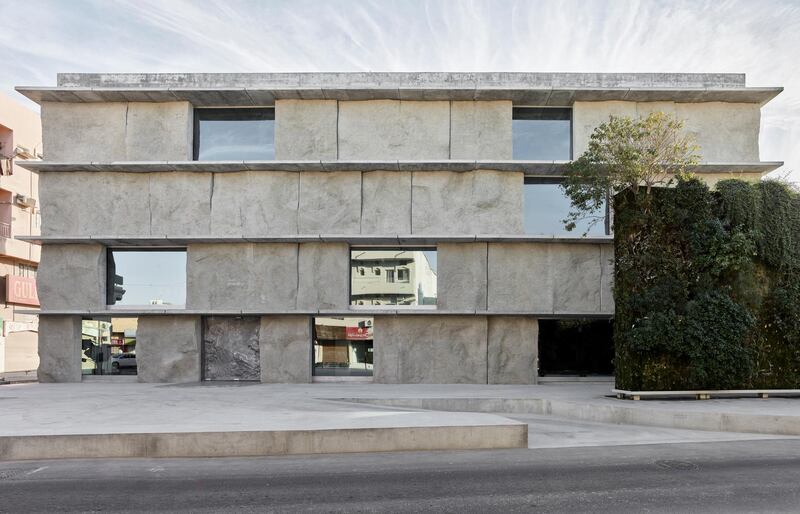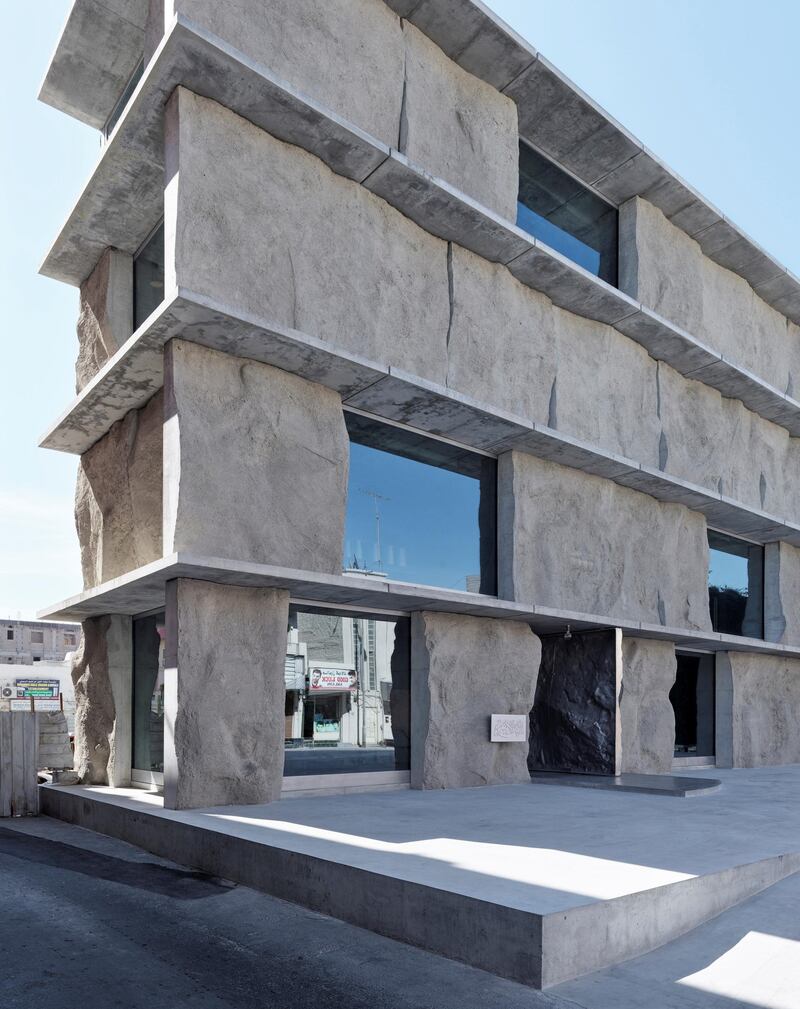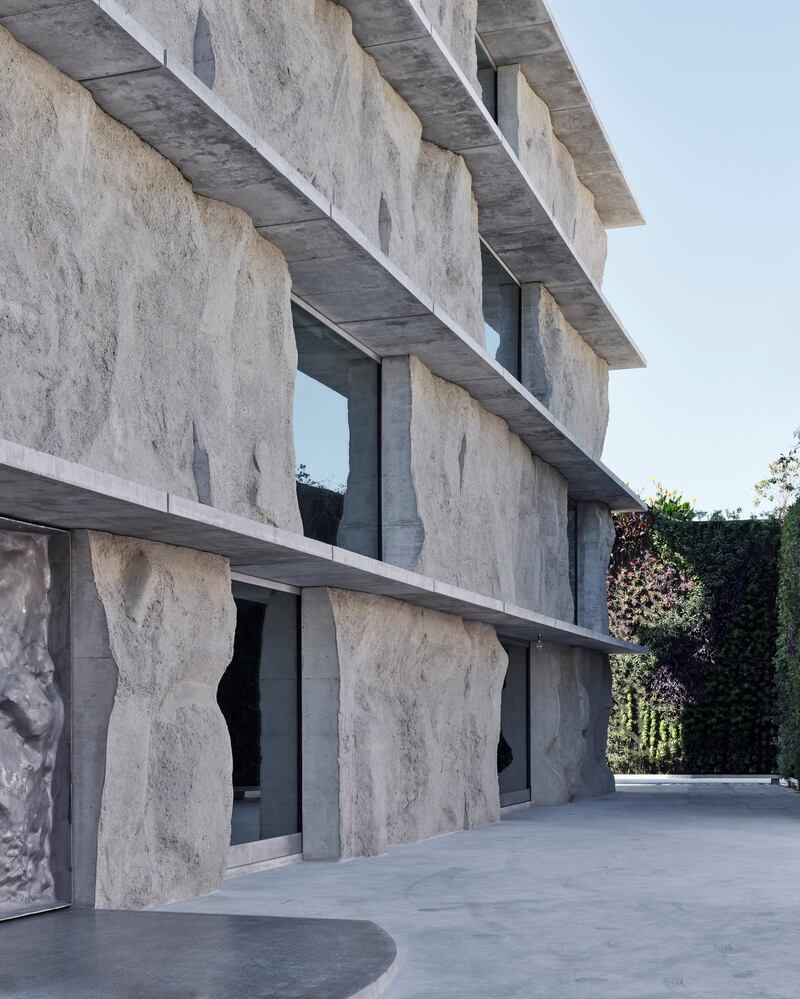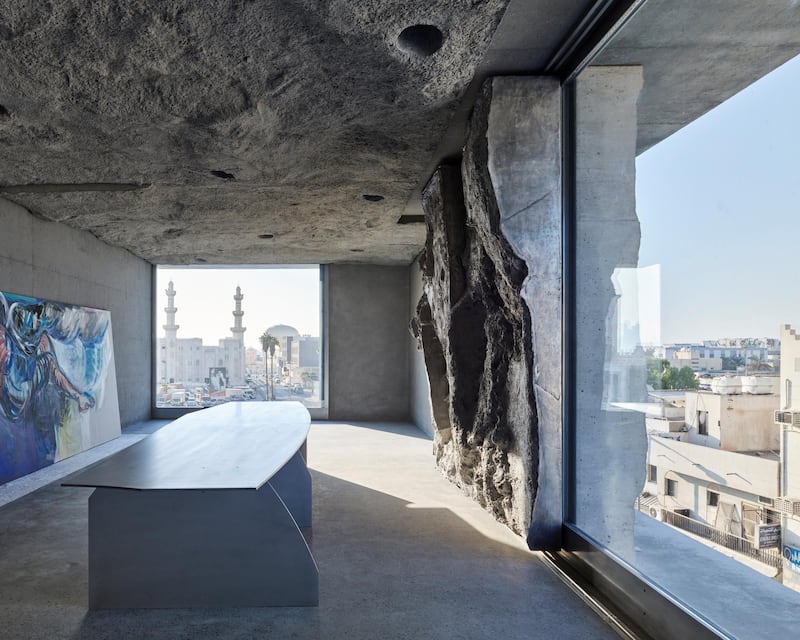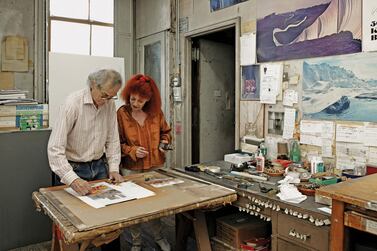When you think of contemporary buildings that are emblematic of their location, and known for their distinctive architecture and groundbreaking engineering, typically images of illuminated skyscrapers come to mind. However, that isn't the case for The Green Corner.
Located in the heart of Bahrain's former capital city Muharraq, the impressive new building is much more subtle and intriguing. Strikingly contemporary, the new landmark has an ancient feel to it because of the materials and methods of construction used.
The new cultural site, which opened to the public this month, includes a restoration centre for historical artworks and manuscripts, managed in co-operation with Egypt's Bibliotheca Alexandria, as well as an archive of Bahraini art and literature. Its titular collection is a full ecological and environmental library. Located next to the Muharraq Green Gate and near the Unesco World Heritage-listed Pearling Path, it is the result of a joint project between the UAE and Bahrain.
Designed by acclaimed Bahrain-based Dutch architecture firm Studio Anne Holtrop, the four-storey structure features interiors by Bahrain's Ammar Basheir Creative Studio, with structural engineering carried out by Mario Monotti and construction led by UAE contractor GCT.
Panels making up the structure of the building, from the exterior and interior walls to the floors and ceilings, were cast onsite from concrete poured directly on to the ground. It is a technique called soil as shuttering, which results in unique panels from the shifting sands.
Architect Anne Holtrop previously introduced this technique on the border walls of the nearby Souq Al Qaysariya project with the aim of evoking the coral stone of traditional architecture in the area. Making building components at the site reflects older means of construction, and the resulting texture feels historic.
Holtrop says his original concept behind the technique and its application evolved with the Green Corner project. The artisanal panels are structural, which is pioneering for a building of such scale.
“This method that we are developing is most outspoken in this building,” Holtrop says.
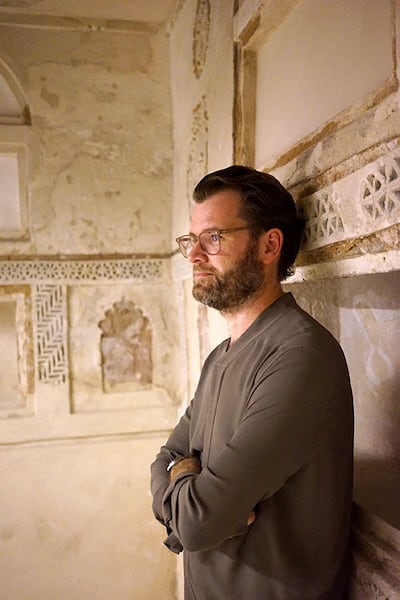
“The key element of the design is making something that feels borne from its place. Literally, the strong sand reliefs reflect the Muharraq surroundings because all the concrete is cast on the building site itself, being imprinted directly by the ground, which changes every time because we’re always working on it.”
In addition to concrete panels and large glass windows, Green Corner features oversized aluminium doors. They were also cast using the soil as shuttering technique, resulting in an unusually raw presence of the ubiquitous material.
Holtrop explains that while coral stone was the vernacular material of the past, aluminium is the present-day equivalent.
Bahrain is home to one of the world’s largest aluminium smelters, Alba, and the kingdom’s pavilion at the 2016 Venice Biennale was themed “Places of Production – Aluminium”.
Although the doors were created at an art foundry in the Netherlands, the majority of design and fabrication works for the building took place in Bahrain, where Holtrop has opened offices and trained a team of locals. He reveals that everyone he meets from the international design community can find the region on a map because of its distinctive and cutting-edge developments.
The Green Corner has been developed under the auspices of Bahrain's Shaikh Ebrahim Centre for Culture and Research, which plays a major role in bolstering heritage. Considerable support for the project has been provided by the UAE in recognition of the Year of Zayed, honouring the role of the Founding Father in strengthening relations between the two countries.
The official opening was led by Noura Al Kaabi, the UAE Minister of Culture and Youth, alongside Sheikha Mai Bint Mohammed Al-Khalifa, president of the Sheikh Ebrahim Centre's Board of Trustees, president of the Bahrain Authority for Culture and Antiquities, and chairwoman of the Board of the Arab Regional Centre for World Heritage.
Bahraini sculptor Khalid Farhan, an artist whose work has been included in the project, says: "It is a modern and contemporary building that has a hut-like feel. When you look at the building from the outside you feel strong, and from the inside you feel calm and safe. It is a very beautiful building in terms of design and idea."
